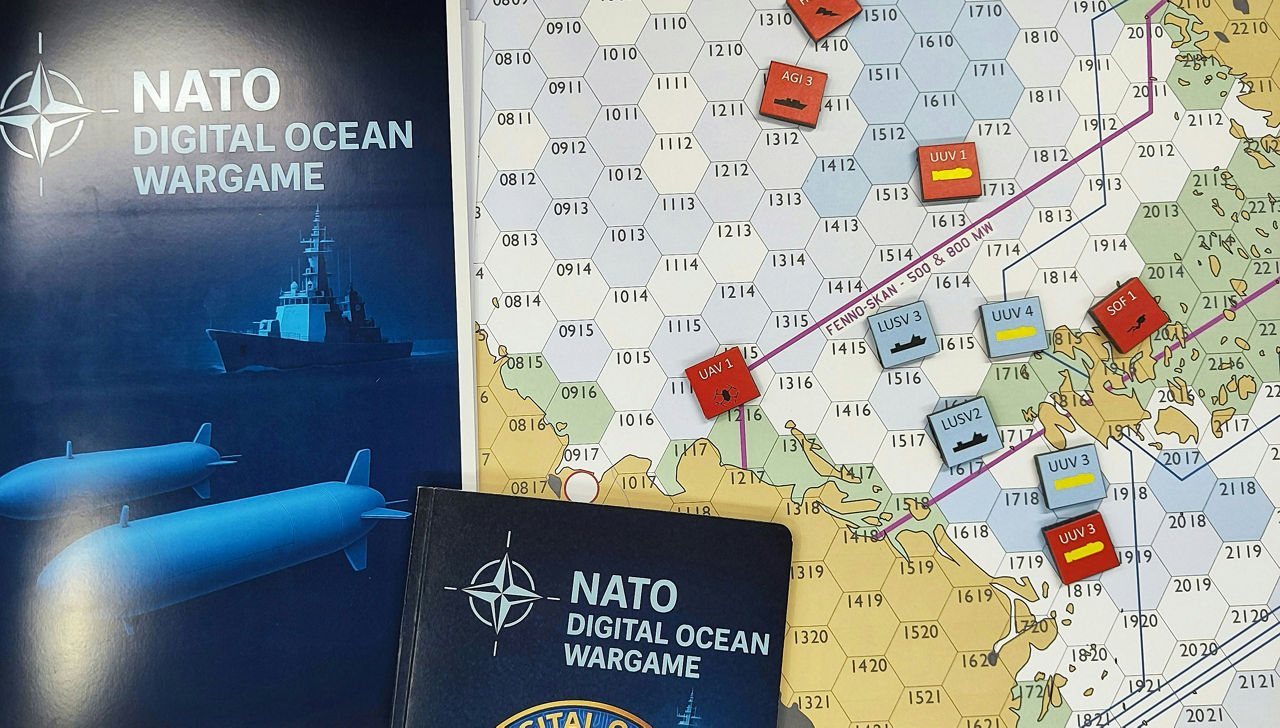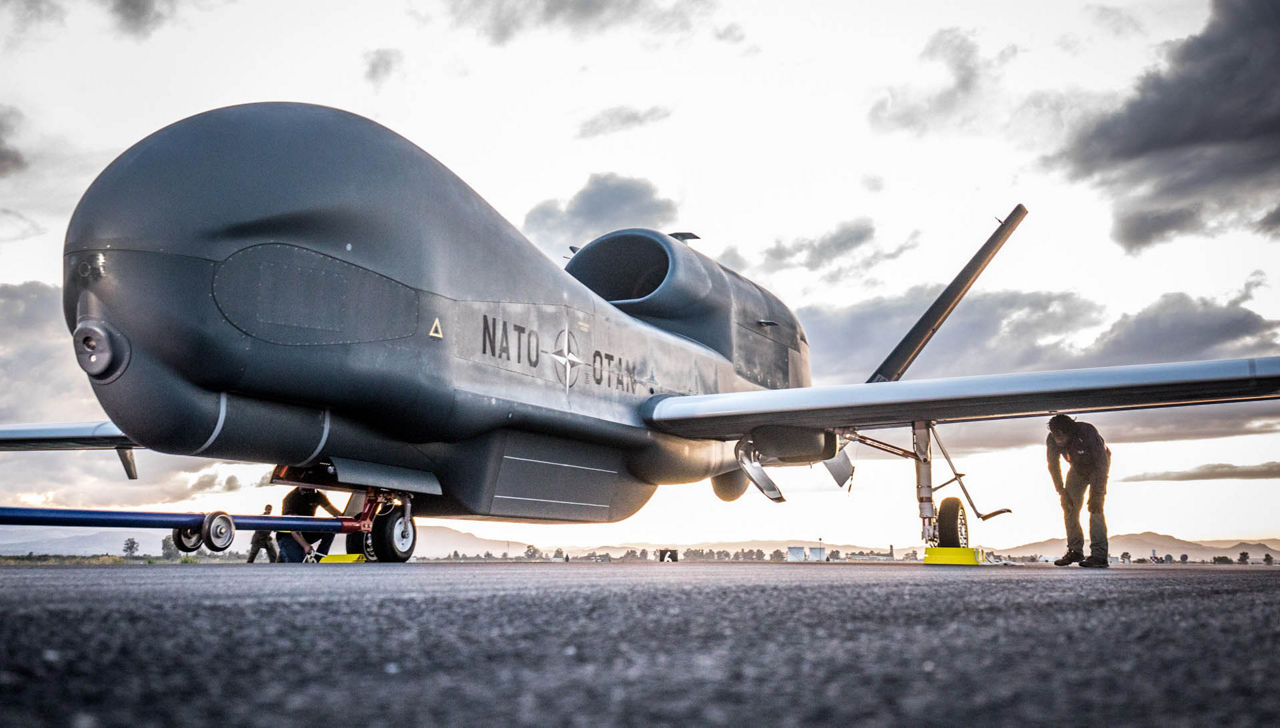Download NATO’s broadcast-quality video content free of charge

Log in
NATO MULTIMEDIA ACCOUNT
Access NATO’s broadcast-quality video content free of charge

Check your inbox and enter verification code
You have successfully created your account
From now on you can download videos from our website
Subscribe to our newsletter
If you would also like to subscribe to the newsletter and receive our latest updates, click on the button below.
Enter the email address you registered with and we will send you a code to reset your password.
Didn't receive a code? Send new Code
The password must be at least 12 characters long, no spaces, include upper/lowercase letters, numbers and symbols.
Your password has been updated
Click the button to return to the page you were on and log in with your new password.
Joint Intelligence, Surveillance and Reconnaissance
Updated: 30 July 2025
Joint Intelligence, Surveillance and Reconnaissance (JISR) is vital for all NATO military operations. It provides decision-makers and action-takers with a better situational awareness of the conditions on the ground, in the air, at sea, in space and in the cyber domain. Allies work together to collect, analyse and share information to maximum effect. This makes Joint ISR a prime example of cooperation and burden-sharing across the Alliance.
- NATO has established a permanent JISR system providing information and intelligence to key decision-makers, helping them make well-informed, timely and accurate decisions.
- JISR is a key element of NATO operations and missions and a cornerstone of the Alliance’s deterrence and defence posture.
- JISR brings together data and information gathered through assets such as the NATO Intelligence, Surveillance and Reconnaissance Force (NISRF) or NATO Airborne Warning & Control System (AWACS) surveillance aircraft, as well as a wide variety of national ISR assets from the space, air, land and maritime domains.
What is ISR?
Intelligence, Surveillance and Reconnaissance (ISR) provides the foundation for all military operations, and its principles have been used in warfare for centuries. The individual elements of ISR are:
- Intelligence: the final product derived from surveillance and reconnaissance, fused with other information;
- Surveillance: the persistent monitoring of a target; and
- Reconnaissance: information-gathering conducted to answer a specific military question.
Both surveillance and reconnaissance can include direct visual observation (for example soldiers on the ground covertly watching a target, or crew members observing the movement of a vessel from a plane or ship) as well as electronic observation using more advance technologies (including satellite imagery, uncrewed aircraft systems and passive sensors).
The difference between surveillance and reconnaissance has to do with time and specificity; surveillance is a more prolonged and deliberate activity, while reconnaissance missions are generally rapid and targeted to retrieve specific information.
Once surveillance and reconnaissance information has been obtained, intelligence specialists can analyse it, fuse it with other information from other data sources and produce the intelligence which is then used to inform military and civilian decision-makers, particularly for the planning and conduct of operations.
Sharing intelligence among Allies
While all countries have their own sources and methods for the production of intelligence, it is not always easy for Allies to share their intelligence with other Allies. Sometimes this is due to security concerns, sometimes it is based on internal procedural requirements, and sometimes it is limited by technological constraints.
The objective of NATO’s Joint ISR is to champion the concept of Allies’ “responsibility to share” relevant information over the concept of only sharing information on a “need to know” basis. This does not mean that all Allies will automatically share everything, but rather that NATO can facilitate the procedures and technology to promote sharing while simultaneously providing information assurance (i.e., the protection of data and networks). This way, Allies can have a holistic picture of the situation on the ground and NATO decision-makers can make well-informed, timely and accurate decisions.
Gathering information and producing intelligence – NATO’s JISR system
In order to provide Allies with a mechanism for gathering information and producing intelligence, the Alliance has established a permanent, effective Joint ISR system. The system includes both NATO-owned and national ISR capabilities.
The experience the Alliance gained from its operations in Afghanistan and Libya has resulted in collection assets (for example, information-gathering equipment such as surveillance aircraft) becoming far more accessible to military personnel, even at the lowest tactical levels. Assets that would have been used only for strategic purposes at the discretion of military generals years ago are now widely available and their use is decentralised. This shift occurred because NATO member countries procured significant numbers of maritime, land, airborne, cyber and space collection assets to help them locate adversaries, who often operate in complex environments and among civilian populations.
To enable information-gathering to take place, and to ensure that information is analysed and intelligence is produced for decision-makers, there are a number of primary actors involved, including:
- Surveillance and reconnaissance collection assets
Their role is to collect information. Examples include surveillance aircraft from the NATO Intelligence, Surveillance and Reconnaissance Force (NISRF) and the Airborne Warning & Control System (AWACS), which use radar, observation satellites, electronic assets and special ground reconnaissance troops to gather information. This can also include a wide variety of national ISR capabilities, including troops on the ground, maritime and air assets, space-based platforms, and Special Operations Forces.
- Intelligence analysts
Their role is to exploit and analyse information from multiple sources. Examples include national military and civilian analysts working at the strategic level in intelligence organisations, imagery analysts at all levels, and encryption experts.
- Decision-makers
Their role is to use intelligence to inform their decision-making. Examples include political leaders and military commanders.
The Alliance regularly exercises its Joint Intelligence, Surveillance and Reconnaissance capabilities, including through exercise Unified Vision, NATO’s biggest JISR exercise, which takes place every three years. The most recent iteration, which took place in 2023, involved participants from 18 NATO countries (and former Invitee Sweden, which joined NATO in March 2024) as well as numerous NATO entities and industry experts from across the Alliance. Participants used maritime, land, air and space assets to collect, process, analyse and distribute data, testing and improving their ability to exploit and share intelligence from seabed to space.
NATO’s JISR capability is based on the following pillars:
- Training and education
The personnel involved with the Joint ISR capability in NATO must possess the necessary expertise to guarantee the efficiency of the JISR enterprise. As such, NATO ensures that its JISR personnel receive the highest standard of ISR training and education.
- Doctrine and procedures
To improve interoperability, efficiency, coherence and effectiveness, Joint ISR doctrine and procedures are continuously developed and reviewed, from strategic thinking to tactical procedures.
- Networking environment
NATO communication and information systems (CIS) guarantee efficient collaboration and sharing of ISR data, products and applications between the Allies. This is the core business of NATO’s Joint ISR effort.
The role of space in JISR
Space-based assets, such as satellites, play a critical role in providing Intelligence, Surveillance and Reconnaissance capabilities to NATO Allies and partners.
Russia’s war of aggression against Ukraine has underlined the need for the Alliance to have a clear picture of all developments on the ground, in the air and at sea. The space domain offers NATO an intelligence edge and allows Allies to gather insights while reducing vulnerabilities (i.e. replacing the need for assets in the field).
The last several years have also seen a significant expansion of the commercial space-based intelligence sector. This represents both a risk and an opportunity for the Alliance. The proliferation of private actors in space increases the risk of ISR activities conducted by potential adversaries against Allied populations, territory and forces. But commercial actors can provide cost-effective and scalable solutions that meet NATO's demands and complement publicly owned capabilities, reducing the dependency on a limited number of national space assets.
To increase the Alliance’s space-based ISR capabilities, 17 NATO Allies are currently developing the Alliance Persistent Surveillance from Space (APSS) initiative – the largest multinational investment in space-based capabilities in NATO’s history. APSS will use data from a large-scale, virtual constellation of national and commercial surveillance satellites, called “Aquila”, to provide the Alliance with faster and better intelligence, integrate even more space-based data into NATO’s intelligence ecosystem and leverage technological breakthroughs from the commercial sector. APSS is currently in its implementation phase. Over the next five years, Allies plan to contribute significant investment to leverage commercial and national space assets, and to expand advanced data exploitation capabilities. The 17 participating NATO Allies are: Belgium, Canada, Denmark, Finland, France, Germany, Greece, Hungary, Italy, Luxembourg, the Netherlands, Norway, Poland, Romania, Sweden, Türkiye and the United States.
The APSS initiative – which focuses on assets looking down at Earth – will complement the Strategic Space Situational Awareness System (3SAS), which focuses on assets looking up at space. The 3SAS capability will allow the Alliance to better understand the space environment and space events, and their effects across all operational domains. The 3SAS system is supported by funding from Luxembourg. The project will support NATO’s Space Operations Centre, which was established in Ramstein, Germany in 2020.
Learn more: NATO’s approach to space
Evolution
During the 2012 Chicago Summit, Allied Heads of State and Government expressed the ambition to provide NATO with an enduring and permanently available JISR capability, giving the Alliance the eyes and ears it needs to achieve strategic decision-making advantage.
At their meeting on 10 February 2016, Allied Defence Ministers declared initial operational capability (IOC) for NATO’s JISR capability. This represented a significant achievement, enabling better connectivity between NATO and Allies’ capabilities and enhancing situational awareness throughout quick-reaction forces operating under the NATO banner.
IOC was only the first milestone for the JISR initiative. Over the following years, further work was conducted to sustain and expand these achievements. In October 2020, NATO Allies endorsed a comprehensive JISR strategy, which is guiding the development and fielding of interoperable intelligence capabilities in a more agile manner, including a focus on cutting-edge technologies such as big data, artificial intelligence and autonomous systems.
In view of today’s rapidly changing security environment, JISR continues to adapt to ensure that the Alliance has the information and intelligence needed to make the right decisions at the right time.



